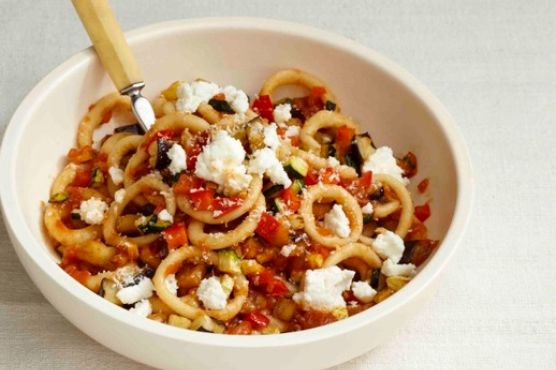Welcome to a culinary journey that pays homage to the heart of Italian cuisine with our delicious Anellini alla Pecorara! This recipe not only captures the essence of traditional flavors but also combines healthy ingredients to create a wholesome dining experience. With a health score of 91, this dish is crafted for those who celebrate good eating without compromising on nutrition.
The vibrant medley of boneless beef, pork, and lamb, slow-cooked in a rich ragù, infuses this dish with bold flavors that resonate in every bite. Complemented by sautéed eggplant, zucchini, and bell peppers, Anellini alla Pecorara is more than just pasta; it's a feast for the senses. As you knead the homemade pasta dough, you’ll appreciate the craftsmanship that goes into creating the delicate anellini rings that cradle the savory sauce.
Perfect for family gatherings or special occasions, this dish serves eight portions, allowing you to share the warmth and joy of home-cooked meals with loved ones. The balance of protein, vegetables, and just the right touch of cheese makes it an exemplary main course or side dish that will impress your guests. So roll up your sleeves and get ready to experience the vibrant flavors of Italy, right in your own kitchen!
